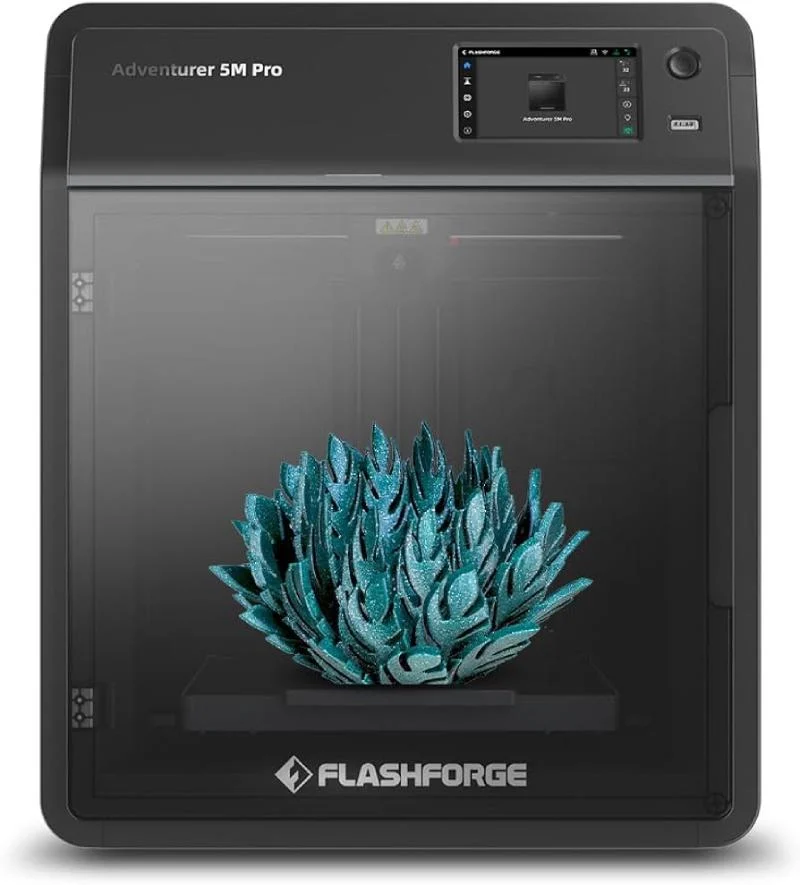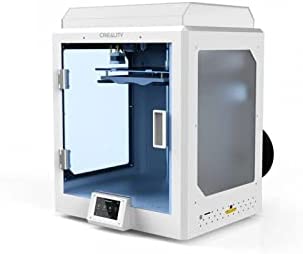Compare Adventurer 5M PRO vs CR5 PRO H
Comparison between the best 3D printers
Choose the best 3D printer at the best price. The cheapest 3D printers are here.
Buy a 3D printer here with 3D Fila.
 |
 |
|
| Model | Adventurer 5M PRO |
CR5 PRO H[BUY CR5 PRO H] |
| Printing Material | Filament | Filament |
| Buy Filament for Flashforge Adventurer 5M PRO | Buy Filament forCreality 3D CR5 PRO H | |
| Estimated price | $599,00 | $1300,00 |
| Manufacturer | Flashforge | Creality 3D |
| Release Year | 2023 | 2022 |
| Print Volume [mm] | 220x220x220 | 300x225x380 |
| Printer Size [mm] | 380x400x453 | 530x487x612 |
| Weight [kg] | 10,8 | 32,5 |
| Power Loss Recovery | YES | YES |
| Enclosed printer | YES | YES |
| Bed Leveling | Automatic | Automatic |
| Filament End Sensor | YES | YES |
| Bed type | Heated | Heated |
| Power supply system | Direct Drive | Bowden |
| Standard nozzle | 0,4 | 0,4 |
| Maximum Nozzle Temperature [°C] | 280 | 300 |
| Maximum Bed Temperature [°C] | 110 | 100 |
| Maximum printing speed [mm/s] | 600 | 100 |
| Filament holder | YES | YES |
| Camera for supervision | NO | NO |
| Recommended filaments | PLA, PETG, TPU, PLA-CF, PETG-CF | PLA, PETG, Tritan, Flex, ABS |
| Recommended slicers | FlashPrint 5 | Cura, Simplify, Slic3r, IdeaMaker |
| Maximum Resolution [mm] | 0,1 | 0,1 |
| Processor | ATMEGA 2560 | |
| Display | Touchscreen 4,3'' | Display touchscreen 4,3'' |
| Power Supply | 350 W | 110/220V / 350W |
| Connectivity | Wifi / Ethernet / USB | SD / USB |
| Operating systems | Windows, Linux, Macbook | Windows, Mac, Linux |
| Date of registration in the system | 2024-07-09 | 2022-11-04 |
| Release date | 2023 | 2022 |
| Extra features | The Flashforge Adventurer 5M PRO features advanced features such as a CoreXY motion system, direct drive extruder, print speeds of up to 600mm/s and maximum acceleration of 20,000mm/s². It features fast nozzle changes, automatic calibration, active vibration compensation, camera monitoring, time-lapse video, HEPA and carbon filters for particles and VOCs, and an intuitive 4.3-inch touchscreen interface. Ideal for printing materials such as PLA, PETG, ABS and TPU. | The Creality CR-5 PRO H 3D Printer stands out with a high-temperature nozzle (up to 300°C), a 300 x 225 x 380mm print volume, and a closed chamber for thermal stability. It includes BLTouch auto-leveling, a carbon-crystal silica glass base for easy model grip and removal, a filament sensor, and a resume print function. It has a 4.3-inch touchscreen interface, quiet operation, an attractive design, and is pre-assembled, ideal for technical materials. |
| Support for multiple colors and materials (AMS and CFS) | NO | NO |
Notes * |
||
| Cost-benefit | 7 / 10 | 6 / 10 |
| Hardware | 3.5 / 10 | 3 / 10 |
| Tela | . | . |
| Print volume | 3 / 10 | 4 / 10 |
| Performance | 5 / 10 | 1 / 10 |
| [BUY CR5 PRO H] |
Conclusion |
| In comparing the Flashforge Adventurer 5M PRO and the Creality 3D CR5 PRO H, several critical factors emerge that can guide a potential buyer in making an informed decision. The Adventurer 5M PRO, priced more affordably, offers impressive features for its cost, including a CoreXY motion system, direct drive extruder, and high print speeds. It excels in user-friendliness with automatic calibration and rapid nozzle changes, making it a strong contender for hobbyists and those new to 3D printing. Additionally, its compact size and lightweight design make it suitable for smaller spaces. On the other hand, the CR5 PRO H caters to users needing larger print volumes and the ability to handle advanced materials, with a maximum nozzle temperature reaching 300°C. While it is significantly pricier, its closed chamber design ensures thermal stability, which is essential for professional-grade prints, especially with technical materials. The printer is also noted for its quiet operation and pre-assembled setup, appealing to those seeking a reliable and ready-to-use machine. In summary, the Adventurer 5M PRO scores highly in terms of cost-effectiveness, performance, and beginner-friendliness, making it ideal for casual users and smaller projects. Conversely, the CR5 PRO H, while more expensive, offers enhanced capabilities for advanced users requiring a larger print volume and specialized material compatibility. Ultimately, the decision should be based on the user's specific needs, budget, and intended use for the 3D printer. |

